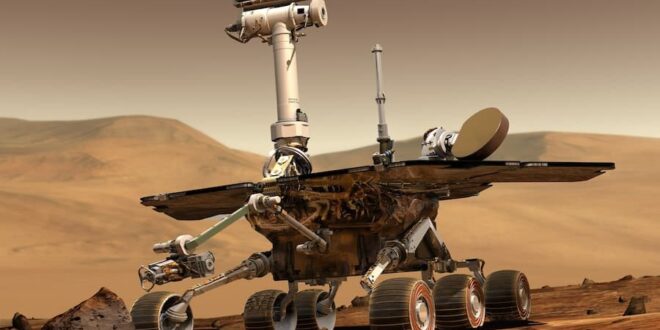What is the population of humans on Mars? The idea of humans colonizing and inhabiting the red planet has been a topic of interest and speculation for many years.
With advancements in space exploration technology and efforts by space agencies like NASA and private companies like SpaceX, the possibility of a human presence on Mars in the future is becoming more plausible.
The concept of establishing a permanent settlement on Mars has gained significant attention, with plans and missions being discussed and proposed.
However, they are immense challenges and complexities that we must first overcome. Luckily, scientists and engineers continue to work towards making this vision a reality. Let’s start our discussion on this subject by answering the question,
What Is The Population Of Humans On Mars?
As of now, there is no population of humans on Mars. Mars is an uninhabited planet with no permanent settlements or colonies.
However, there have been numerous discussions and plans to send humans to Mars in the near future. Organizations like SpaceX are actively working to develop the technology and strategies necessary for human colonization.
Conspiracy Theory Surrounding Mars
Although it cannot be proven, some firmly believe that there is more to the story of Mars than what meets the eye.
While many controversies exist regarding life in the universe and the possibility of aliens, this new conspiracy theory suggests that humans may have once lived on Mars.
According to this theory, Mars was not always the barren and red planet we know today. Instead, it is believed that it had natural resources similar to Earth and a different appearance before a catastrophic event occurred.
The proponents claim that millions of years ago, a war broke out between civilizations on Mars, leading to the planet becoming uninhabitable.
This supposed nuclear war changed the landscape of Mars, giving it the red color we see today. What adds fuel to this conspiracy theory is that numerous military and government officials have testified before Congress about the existence of aliens.
With such testimonies, dismissing the idea that life on Mars is far-fetched becomes increasingly difficult. While this theory may be speculative and cannot be substantiated, it is interesting to discuss.
Why Does Mars Appear Red?
The red appearance of Mars is due to the high concentration of iron in its rocks, which undergo oxidation when exposed to the Martian environment. This process resembles how an old bike left out in the yard gets rusty.
The resulting rusty dust particles from these rocks are kicked into the atmosphere, causing the Martian sky to appear pink. This phenomenon gives the entire planet a reddish color when observed from afar.
Similarities Between Mars And Earth
Despite the stark differences between Mars and Earth, various space missions and scientific research have observed striking similarities. These Include:
1. Valleys
Mars and Earth have valleys, although their origins and characteristics may differ. On Mars, some valleys are believed to have been shaped by ancient rivers or water flow.
Others might be the result of volcanic or tectonic activity. On Earth, valleys are primarily formed by water erosion, glaciers, or geological processes.
2. Mountains
The presence of mountains is another shared feature between Mars and Earth. They both have significant mountain ranges that vary in size and height.
Martian mountain, such as Olympus Mons, is the largest in the solar system, while Earth’s tallest mountain is Mount Everest.
3. Volcanoes
Volcanoes are common geological features on both planets. While Earth has more active volcanoes due to its tectonic activity, Mars also displays evidence of past volcanic activity.
4. Weather patterns and seasons
Mars experiences weather patterns and seasons similar to Earth but with distinct variations due to its thinner atmosphere and longer orbit around the sun.
Martian seasons, like Earth’s, result from the tilt of its axis. However, the durations and intensities of Martian seasons differ significantly from those on Earth.
5. Similar day length
The length of a Martian day is remarkably close to that of Earth. A Martian day, known as a sol, is only about 39 minutes longer than an Earth day, which is 24 hours long.
6. Presence of water
Evidence suggests that Mars may have had enough liquid water to support primitive forms of life in the past.
Evidence from various Mars missions, such as the presence of ancient riverbeds and lake-like structures, indicates that liquid water may have once flowed on the Martian surface.
7. Polar ice caps
Earth’s polar ice caps are primarily composed of frozen water, while those on Mars contain a mixture of water ice and carbon dioxide ice (dry ice). These ice caps expand and contract with the changing seasons on both planets.
Challenges We Must Overcome To Colonize Mars
1. Radiation exposure – One of the foremost challenges we face in colonizing Mars is safeguarding astronauts from solar radiation during their journey through space and on the Martian surface.
With no protective magnetic field or thick atmosphere like Earth, innovative shielding solutions are imperative to shield our pioneers from harmful radiation. Currently, no practical and reliable solutions exist, but progress is being made.
2. Toxic soil – The Martian soil contains various chemicals and perchlorates that could be hazardous to human health and likely hinder plant growth. If we are to colonize Mars, we need to find ways to safely cultivate crops and utilize the soil’s resources.
3. Low gravity – The gravitational pull on Mars is only about 38% of Earth’s, which can affect human health.
Prolonged exposure to low gravity can lead to muscle atrophy, loss of bone density, and cardiovascular problems. Developing countermeasures, artificial gravity systems can help address this issue.
4. Water scarcity & cold temperatures – Water is essential for human survival, and finding sustainable water sources on Mars will be critical for long-term habitation.
Similarly, the extreme cold temperatures on Mars can make it difficult to maintain suitable living conditions. Overcoming the challenge of sourcing, extracting, and utilizing water resources on Mars is a must to sustain life.
5. Psychological isolation – The vast distance from Earth and the confinement of living in a closed environment can lead to psychological challenges for the astronauts.
Therefore, we must find an effective way to address this issue before sending people millions of miles away from home.
6. Low oxygen – Oxygen is crucial for human respiration and combustion processes necessary for energy production.
With oxygen comprising only 0.13% of the Martian atmosphere, we must find ways to generate or extract oxygen from local resources to support life on Mars.
Why Is Mar The Center Of Our Space Exploration?
Mars is the most Earth-like planet in our solar system, with similar geological features and a thin atmosphere. This makes it a prime candidate for studying the potential for life beyond Earth.
Scientists believe that Mars may have once had conditions suitable for supporting life, and studying its geology and atmosphere can provide valuable insights into the origins and evolution of life in the universe.
Mars is also relatively closer to Earth than other planets, making it more accessible for robotic missions.
The average distance between Earth and Mars is about 225 million kilometers, which allows for shorter travel times and lower fuel requirements.
This proximity has enabled us to send numerous rovers, landers, and orbiters to Mars, gathering valuable data about its surface and potential for human exploration.
Interesting Facts About The Red Planet
- Valles Marineris is a vast canyon system on Mars that stretches over 2,500 miles (4,000 kilometers), making it the longest canyon in the solar system.
- Mars has two tiny, irregularly shaped moons, Phobos and Deimos, much smaller than Earth’s moon.
- The average surface temperature on Mars is about -80 degrees Fahrenheit (-62 degrees Celsius).
- The largest crater on Mars is the Borealis Basin, stretching 5300 miles from end to end and covering 40% of the planet’s surface.
- A year on Mars lasts for 687 days, which is approximately 1.9 times the length of a year on Earth.
- The atmosphere of Mars is thin and primarily composed of 95.9% carbon dioxide, 2.7% nitrogen, and other trace amounts of other gases.
Conclusion
No humans have been sent to Mars permanently, and all missions to the planet have been with rovers and robots to carry out experiments.
However, with the advancements in space exploration technology and the increasing interest in colonizing Mars, it is not unreasonable to expect that humans will eventually establish a permanent presence on the red planet.
As more missions are planned and executed, we may witness the gradual growth of the human population on Mars in the coming decades.
But this will only be possible after addressing some of the abovementioned challenges. Only time will tell what the future holds for the population of humans on Mars.
 Being Human
Being Human




